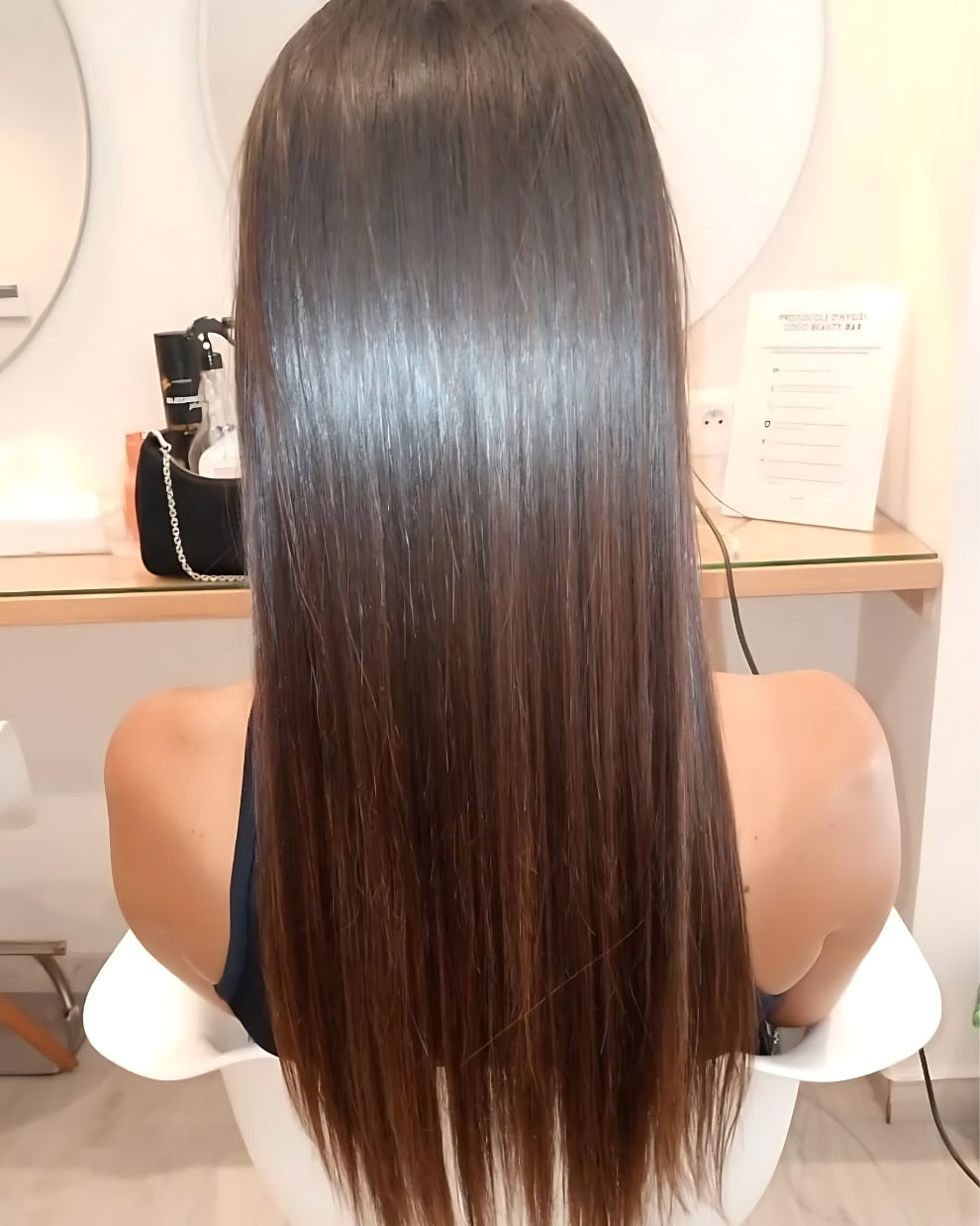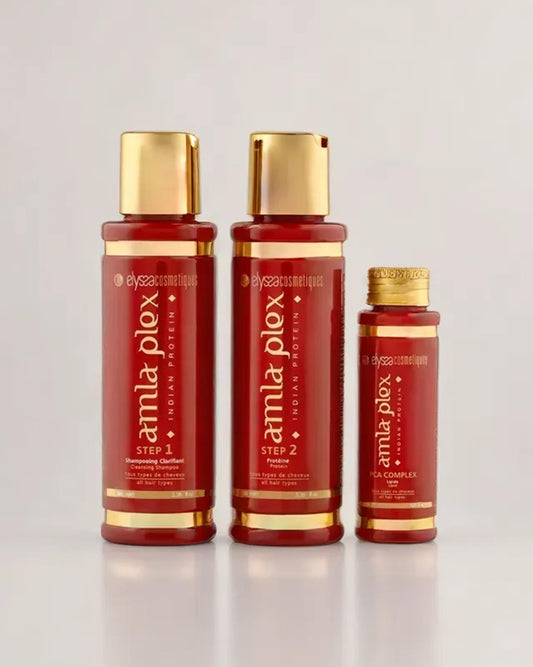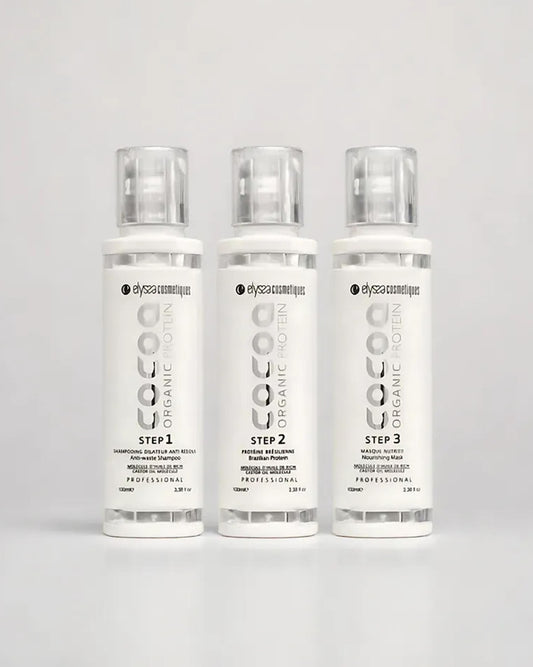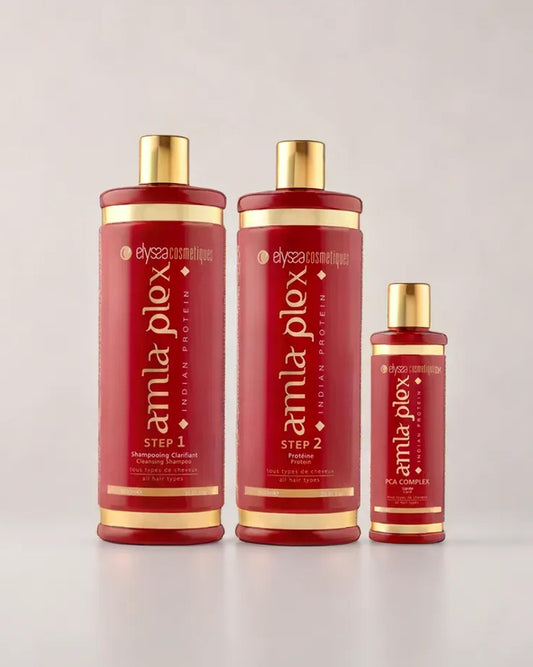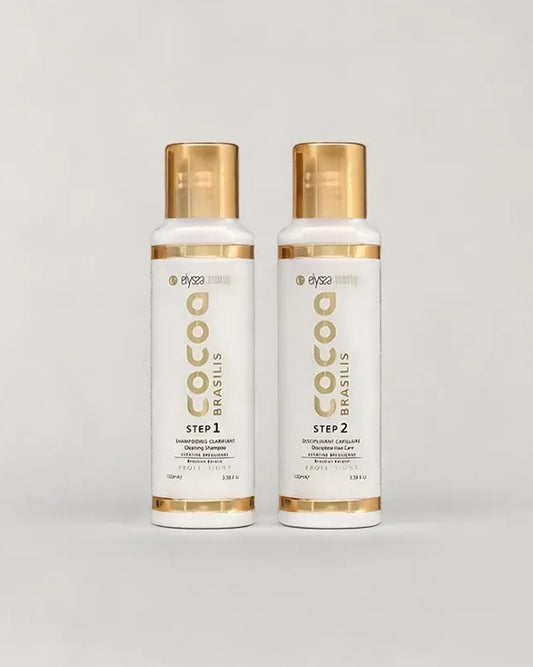Complete Guide: How to Determine Your Hair Curl Type for a Personalized Hair Routine
Complete Guide: How to Determine Your Hair Curl Type for a Personalized Hair Routine:
How to Get Defined Curls in Your Hair?
A quality curl cream is the best ally for achieving perfectly defined curls.
What is the Difference Between Curly Hair and Wavy Hair?
Curly hair is characterized by tighter curls that form a spring, while wavy hair has softer waves. In addition, the curls in curly hair tend to make the hair fiber drier due to their more prominent structure compared to wavy hair.
Tips to Get Natural Curls in Your Hair:
To achieve natural curls, divide your hair into two equal sections, make two loose twists, secure them with an elastic at the nape of your neck, then let sit for a few days (or overnight) before undoing the twists for sleek curls.

What is the Best Product to Get Gorgeous Curls?
We promote the use of products based on grapeseed, avocado, flax or argan oil to redefine curls and maintain their health.
Tips for Getting Beautiful Curls in the Morning:
To reshape the curl, it is essential to maintain adequate hydration. Make sure that your curls remain soft, hydrated and supple for several hours by applying hydrating milks or jellies to the curly ends and distributing them with your fingertips.

What are the 4 hair types?
-
Type 1: Straight hair
- 1a: Very fine and smooth.
- 1b: Straight with a slight wave.
- 1c: Straight with a more pronounced wave.
-
Type 2: Wavy hair
- 2a: Soft, beach-like waves.
- 2b: More pronounced and defined waves.
- 2c: Well defined, almost curly waves.
-
Type 3: Curly hair
- 3a: Large, voluminous curls.
- 3b: Tighter curls, about the circumference of a permanent marker.
- 3c: Well-defined, smaller, tighter curls.
-
Type 4: Frizzy hair
- 4a: S-shaped loops.
- 4b: Zigzags or Z-shaped loops.
- 4c: Frizzy texture, without curl shape.
Each hair type has its own characteristics and requires specific hair care and routines.
There are several factors that can cause hair to lose its curls:
Overuse of hair dryers or hair straighteners is the main common cause of hair loss, as daily heat can cause hair damage.

How to Recognize If You Have Curly Hair?
When you rinse your hair with your head tilted downward and notice a wavy or curly texture, this indicates that your hair has natural curls or waves.
Tips for Sleeping Well with Curly Hair:
To preserve your curls, use a scrunchie or large elastic to gather your hair at the top of your head, then tie it loosely to ensure your curls stay intact overnight.
Reasons Why Your Natural Curls May Not Hold:
Applying too much product to your curls can weaken them and compromise your results, even with leave-in products.

What Products Should You Use to Enhance Your Curly Hair?
TOP 5 products for curly hair
- Elyssa Cosmetics New Formula Curl Cream.
- Eco Styler Olive Oil Styling Gel
- Moroccanoil Intense Hydrating Mask
- Ouidad Advanced Climate Control Heat & Humidity Gel
- Cantu Shea Butter for Natural Hair Leave-In Conditioning Cream
What is a Curl Activator?
Curl activators are versatile, suitable for different hair types (curly, frizzy, or kinky), and can be used to create beautiful curls as well as trendy hairstyles thanks to their exceptional hold.
What is the ideal range for curly hair?
Moroccan oil is a hair product that has gained popularity among celebrities, based on the healing benefits of argan oil. It is suitable for all hair types and also has a full range of products suitable for curly hair.
Tips for Styling Your Curly Hair in the Morning:
To revive your curls in the morning, gently shake your head and use your fingers to reshape your hair by working your way through the scalp. If you want more volume, an afro comb can be used to gently lift the roots.

How to Make Your Curls Last for Several Days?
To avoid breakage, opt for a large satin scrunchie, tie half of your hair loosely, and enjoy a peaceful night's sleep while preserving your curls.
What Type of Layering is Right for Curly Hair?
Cascade gradient:
The waterfall cut is a popular option for curly hair. It consists of a soft layered cut that usually starts around the jawline or shoulders. This helps create movement and fullness while keeping the curls from becoming too heavy.
Short fade:
If you prefer a shorter cut, a short layered bob can be a great option. It creates more defined and lightweight curls, while making it easier to maintain on a daily basis.
Long gradient:
Long layers feature softer, longer layers. They can help reduce volume and give curly hair a sleeker shape.
V-shaped gradient:
The V-cut is a layered cut that creates a V shape at the back. It's great for curly hair because it keeps length while adding texture and movement.
Reverse gradient:
The reverse fade is a layered cut that features shorter strands in the back and longer strands in the front. This can give a modern and dynamic look to your curls.
Custom Gradient:
The key to achieving a successful layered look for curly hair is to customize it to your curl type, hair density, and personal style. Consult a hairstylist who specializes in curly hair for recommendations tailored to your individual needs.
Which Cream Should I Use for Optimal Curl Definition?
Explore Our Selection of Quality Styling Creams:
-
Elyssa Cosmetics New Formula Curl Cream.
-
Cut By Fred. Cream Vegan Curl Cream. N
-
Gyada Cosmetics. Cream Curl Shaping Styling.
-
Gyada Cosmetics. Cream Spirulina Fortifying Styling.
What Types of Hair Are Most Fragile?
Z-type curls, which don't form visible curls and are finer, may feel heavy due to their tight texture, but they are actually among the most fragile.

What is the Finest Hair Type?
Type 4C: Z Curly Hair
This hair is the most delicate and fine of its group. Despite its dense appearance, it is actually very fragile, which underlines the importance of providing it with proper care.
Why Do We Have Curly Hair?
Straight hair is characterized by round-shaped hair follicles, which allow for straight growth. On the other hand, curly hair has oval-shaped hair follicles, which causes it to grow in a curve and maintain that shape throughout its life cycle.
Tips to Enhance Your Curly Hair:
To enhance curly hair, it is essential to follow a few basic rules: start by using a gentle and moisturizing shampoo. Then, rehydrate your hair by choosing a light conditioner or a richer mask, depending on the texture of your curls. Finally, choosing the right styling product is essential to define and enhance your curls.
Tips to Prevent Hair Curl Breakage:
Styling your hair before bed is an essential step. Make sure to dry and comb it before lightly moisturizing it. This will make styling much easier in the morning. For very dry hair, a nighttime treatment, such as using a nourishing spray or a few drops of vegetable oil, is recommended.
Lissage Brésilien : Réponses à Vos Questions
Découvrez notre Guide Complet du Lissage Brésilien : Réponses à Vos Interrogations
